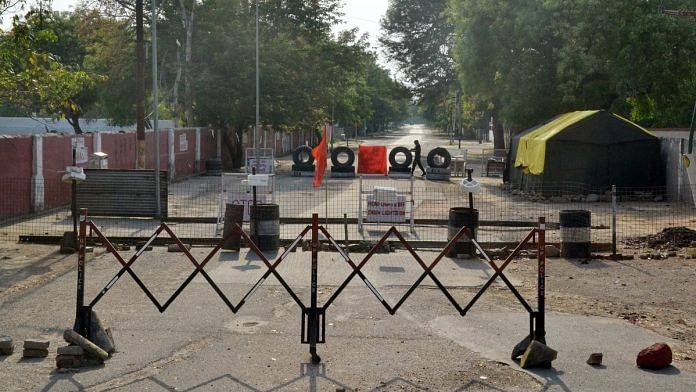New Delhi: In a mammoth task spanning three years, involving hundreds of men, drones, satellites and 3-D modelling, the Ministry of Defence has completed the largest land survey — a digital one — in the country since independence.
According to records maintained by the Defence Estates Offices, the defence ministry is the largest landowner in the country, with about 17.99 lakh acres under it.
Of this, approximately 1.61 lakh acres is held within the 62 notified cantonments. The remaining land, around 16.38 lakh acres, is spread across the country and outside the cantonments.
Of this, about 18,000 acres is either state-hired land or is proposed for deletion from records on account of its being transferred to other departments within the government, according to the defence ministry.
The land held by the Defence Ministry includes firing ranges, test sites and land used for other purposes.
The defence ministry in a statement Sunday said the entire exercise of surveying about 1.61 lakh acres of defence land inside cantonments and 16.17 lakh acres outside them (a total 17.78 lakh acres) has been completed.
Ministry sources said that the digital survey of the remaining land is still on and will be completed soon.
“For the first time after independence, entire defence land has been surveyed by using latest survey technology and, in a large number of pockets, in association with the revenue authorities of various state governments,” the defence ministry statement said.
“The magnitude of land holding, location of land in approximately 4,900 pockets across the country, inaccessible terrain in many places and association of various stakeholders makes this survey one of the largest land surveys in the country,” the statement added.
Also read: Selling defence land seen as only way to raise money for new modernisation fund
When, why was the survey initiated
It was under the tenure of former Defence Minister Nirmala Sitharaman that an order was issued for the survey of defence land in October 2018.
It was part of a series of steps that the Narendra Modi government took on defence land, ministry sources said.
Till then, the defence survey was conducted physically and a need was felt to have a digital survey to get an exact idea about the land held and about any kind of encroachments that may have taken place.
Sitharaman had then said that at times, the vastness of defence land held across the country was such that “we lose almost day-to-day control on property, we have to safeguard and keep the property free from encroachment”.
Sources in the Defence Estates Offices have earlier said that defence land in the 1990s was estimated to be a lot more than 17.99 lakh acres. They said that over the years, several acres of land have been lost due to a number of reasons.
How was the digital survey done
Sources described the task of surveying defence land as “a mammoth one”, involving close coordination with a lot of stakeholders, including state governments.
Incidentally, while modern survey technologies like Electronic Total Station (ETS) and Differential Global Positioning System (DGPS) were used in the survey, the game changer was the use of drones and satellites.
Out of the 17.78 lakh acres surveyed, 8.90 lakh acres were surveyed during the last three months.
The ministry said that for the first time, drone imagery-based survey technology was used for surveying lakhs of acres of defence land in Rajasthan.
It added that the entire area was surveyed with the help of the Surveyor General of India in a matter of weeks, which earlier used to take years.
Also, satellite imagery-based survey was done for the first time for many defence land pockets.
Besides the above, 3D modelling techniques for better visualisation of defence land in hilly areas were also done by utilising the Digital Elevation Model (DEM) in association with the Bhabha Atomic Research Centre (BARC).
Importantly, a project for real-time change detection system, using Satellite Image Time Series (SITS) — satellite images of the same area at different times — for detection of encroachments on defence land has also been initiated.
For this purpose, a pilot test has also been carried out with satellite images of defence land pockets procured from the National Remote Sensing Centre, Hyderabad.
‘Faster decision on transfer, swap’
Defence ministry sources explained that with time there has been a lot of improvement in surveying technology and it was important for them to be utilised for faster decision making.
Earlier methods of measurements, they said, were a cumbersome process.
“With digital survey and records, faster decision can be taken when it comes to land transfer, land swap or to ensure that there is no encroachment,” a defence ministry source said.
Sources said that digitalisation has been a priority for the government and a number of such steps have been taken in Cantonment Boards to make day-to-day functioning easier — like online uploading of birth and death certificates, online payment for various work, among others.
Defence land has been a focus area of the Modi government and in 2020, it had approved new rules that allow equal value infrastructure (EVI) development for armed forces in lieu of the land procured from them.
(Edited by Saikat Niyogi)
Also read: Haryana, UP, Maharashtra saw highest encroachments on defence land in last 3 yrs, says govt






